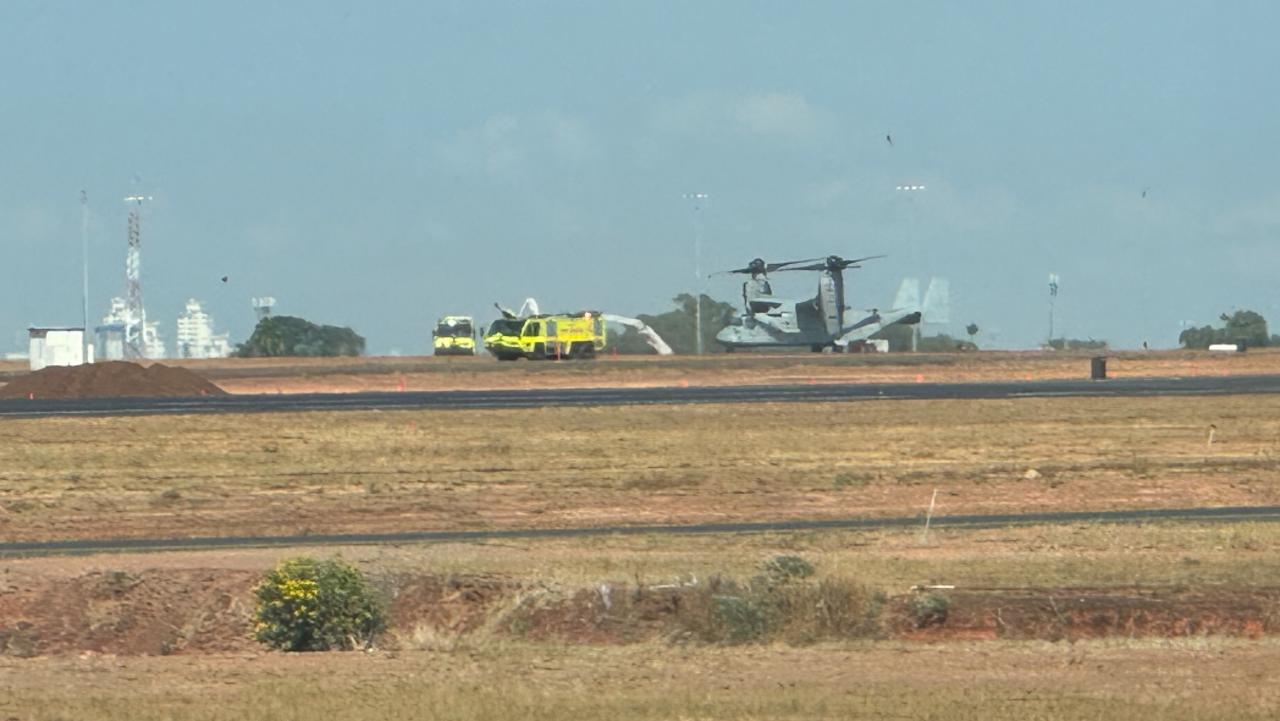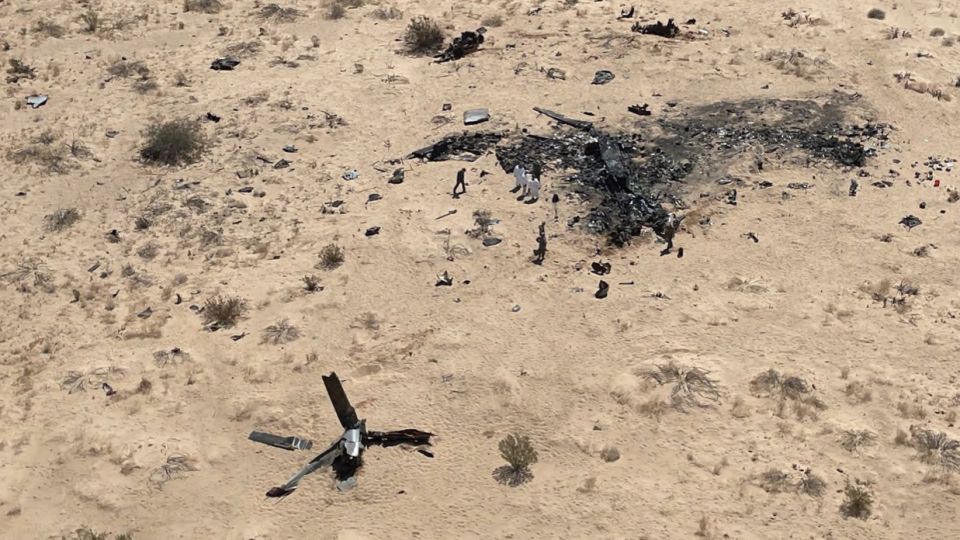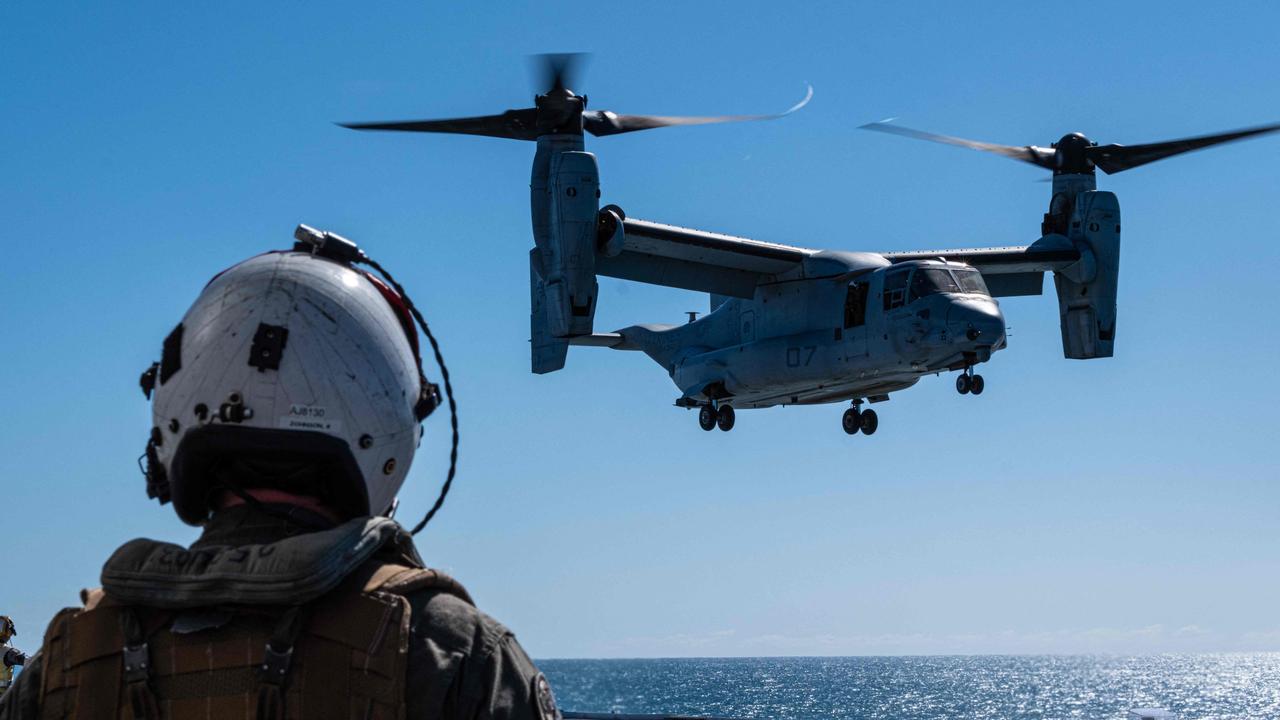
An emergency response at the Darwin Airport has been declared a false alarm after a pair of fire trucks raced across the tarmac to seemingly save a landed United States V-22 Osprey.
On Tuesday, morning, passengers and staff were left confused when the airport came to a stand still as two fire trucks entered the airstrip to pull up alongside the US Marine aircraft.
Civilian onlookers watched with anticipation, only for the fire and rescue teams to stand down and return to their bays, with airport operations resumed a short time later.
There was no emergency and no problem with the aircraft.




